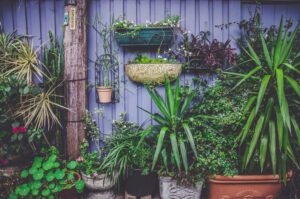One of the most appealing sites to see when you stroll down a grocery store are gorgeous succulents tempting you to take them home.
Succulents are essentially a family of plants resistant to droughts due to their affinity to live in dry or arid climates. Some popular examples of succulent plants include Cacti and Tillandsia (also known as air plants).
Before you choose to plant succulents, however, there are a few things you should know about growing them and keeping them healthy.
Indoor Vs. Outdoor Plantations
There is no uniform rule of planting succulents indoors or outdoors. While some areas have a hospitable environment to succulents, others do not. Most commercially grown succulents will have a plant marker attached to them explaining to you how to care for the plant.
The marker will also let you know which USDA zones are ideal for that succulent. After finding out your USDA zone, you can decide if you want to plant your succulent outdoors or indoors.
Even if your USDA zone is not hospitable to succulents, it is not that difficult to create a nurturing environment for a succulent indoors. For instance, a smart way of planting a succulent container is to use a pre-prepared cactus soil mixture to drainage.
Watering Requirements
Since these are plants adapted to living in dry climates, too much water is like poison for them. If they are exposed to excess water, these plants will become waterlogged and slowly rot away. This is why you have to be very careful when watering these plants. A good rule of thumb would be to water them once a week in summers due to the hot weather and once a month in fall and winter.
Temperature and Light Control
Being perfect for indoor or outdoor use, succulents don’t have very daunting lighting or temperature requirements. The most important thing to remember is to make sure they are being exposed to bright and filtered light.
At the same time, they should not be exposed to direct sunlight, causing them to dry out too fast. Another placement that will heat the succulent quickly is placed right next to a window as glass will amplify the sun’s light. Assessing the plant’s growth is a good way to decide if it is receiving the right amount of sunlight.
Fertilizer Needs
Here is where taking care of succulents becomes a bit tricky as there is a very specific process of fertilizing succulents. If you over-feed them, especially with high-nitrogen fertilizers, they will start to rot.
The perfect blend of fertilizer is a low-balanced soluble fertilizer, for instance, an 8-8-8 or 10-10-10 formula in 1 gallon of water.
At the same time, for succulents, one should use half the amount of fertilizer you are directed to use on the pack. So if the pack directs you to use one tablespoon per gallon, you should use half a tablespoon per gallon.
Conclusion
It may seem a hassle to plant and care for a succulent at first, but you have to remember that these are some of the most long-lasting and cheap plants out there if done right. At the same time, they are also some of the most aesthetically pleasing plants.
You can experiment and learn as you go as succulents will not set your wallet back a lot. However, you should make sure you do some research before planting a succulent to ensure better success rates, or you can buy succulents online and care for it.

